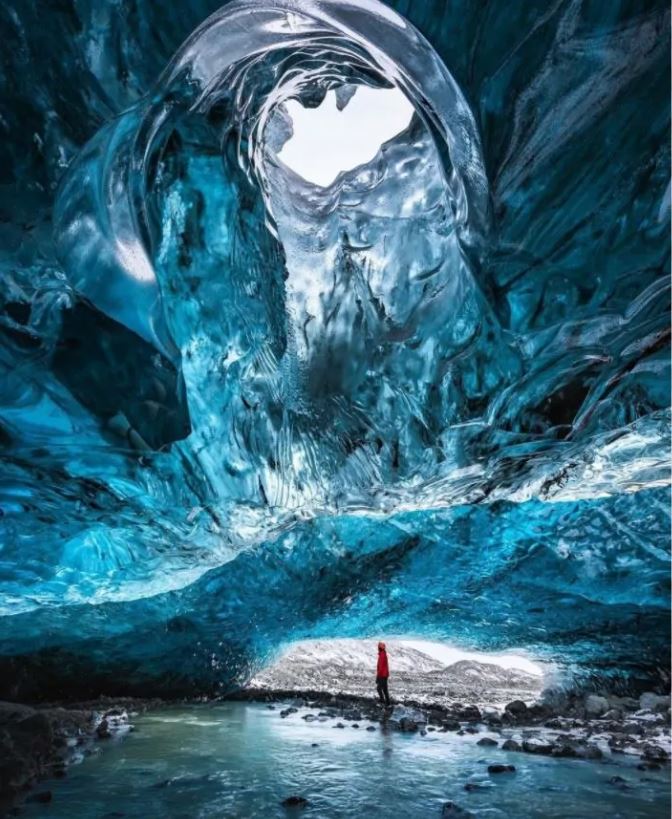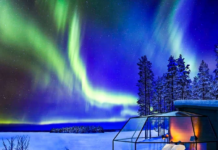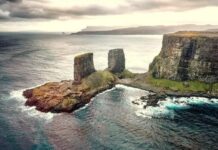One might think that the surface of the glacier is the most interesting part but in truth, the real show lies beneath.
Let’s see together the magical world of the ice cave in Iceland.
The spectacular journey inside the CRYSTAL CAVE: immersed in a FROZEN SEA
# The Vatnajökull glacier: the largest mass of ice in Europe
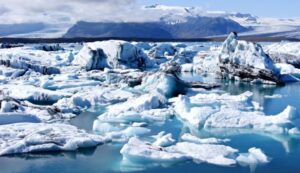
Iceland offers unique natural spectacles in the world and remains on the list of places where nature still reigns supreme.
One such spectacle is the Vatnajökull glacier, an ice cap located in southeastern Iceland.
With approximately 8,100 square kilometers, it is the largest in Europe by volume and the fourth largest mass of ice in the world after the Antarctic ice sheet, the Greenland ice sheet and the Campo de Hielo Sur in Patagonia photo by Dietrich Michael Weidmann.
Under its ice cap there are several active volcanoes, including Grimsvötn whose last eruptions date back to 1996 and 1998.
You might think that the surface of the glacier is the most interesting part but in truth, the real show, hides beneath.
# The ice caves
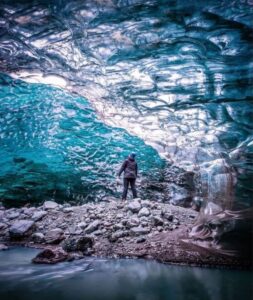
The ice caves are typical of this area, because the geothermal phenomena dig tunnels in the glaciers that can be very large to be able to walk or very small to be almost inaccessible.
They form naturally when the summer meltwater digs long tunnels and caves under the thick layers of ice.
They are real caves that were formed inside a block of ice like a glacier, and are therefore entirely made of ice and this distinguishes them from ice caves.
Since the ice caves are temporary, they are given a name for convenience and the most famous is called “Crystal Cave”.
# The Crystal Cave
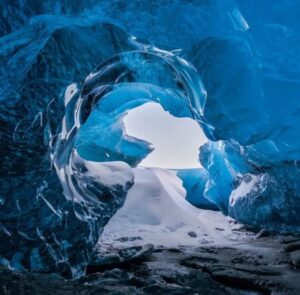
Literally “Crystal Cave”, the Crystal Cave is the name of a large ice cave in the Vatnajökull glacier that forms in more or less the same place since winter 2011-2012.
The Crystal Cave is in fact dug every summer by a large glacial river and is one of the most famous caves because it is included in many guided tours thanks to its size and easy access.
What is most striking about the crystal cave is its intense blue that makes travelers seem to be under the ocean.
But where does this intense blue come from? Glacier ice is much thicker than what we are used to seeing. This ice is so dense and ancient that it absorbs all the colors of the visible spectrum except blue, so that is the only shade that people can see.
# Any advice for visiting the ice caves
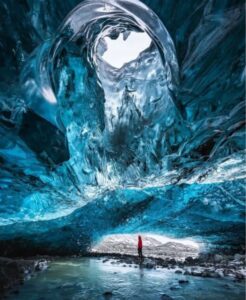
Visiting these caves can be very dangerous. The glaciers are full of cracks, the nature of the caves is dynamic and the ceilings could break and collapse if the temperature rises above 0 ° C, for this it is always necessary to have an expert guide.
The road to the ice caves poses the greatest threat. For the last 6-700 meters before reaching the caves, in fact, you have to drive along paths of black sand and gravel that look like solid ground, but in reality rest on what is known as “dead ice”.
This phenomenon occurs when the glacier stops moving and melts on the spot. Under this “dead ice”, a river could flow and this could cause passenger cars to fall under the ice sheet.
Trekking on a glacier or to visit an ice cave is also not a good idea if you do not have the appropriate equipment such as helmets, ice axes and crampons.
The typical season for natural ice caves in glaciers is winter, from mid-October to the end of March, as the cold allows for greater resistance of the ice vault.
# A unique show in the world
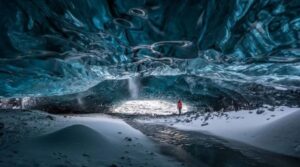
The appearance of the glaciers, as well as that of the ice caves inside them, changes every day due to this continuous movement.
This means that the landscape observed and photographed one day will never be the same again.
ARIANNA BOTTINI


